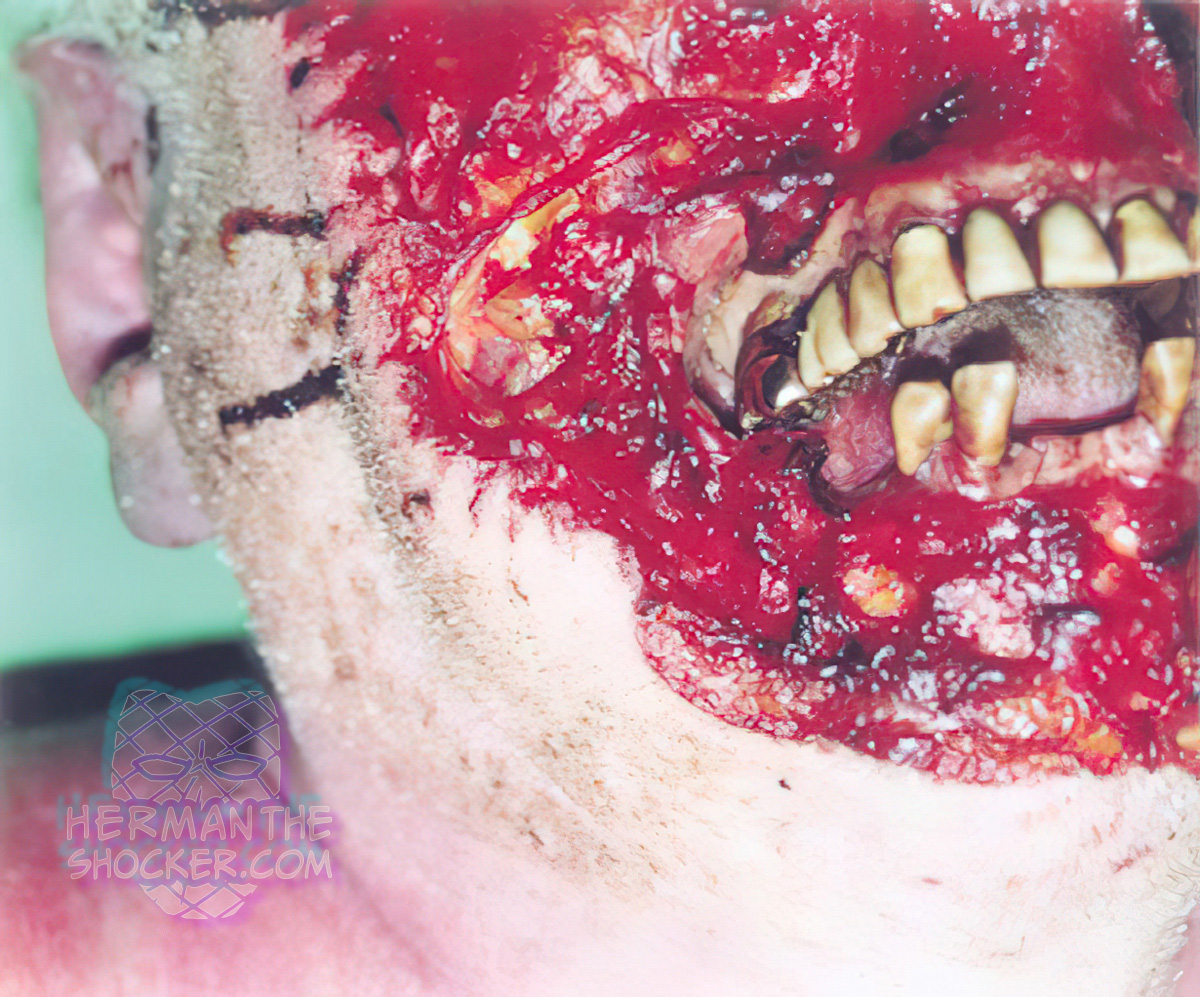Irregular and finely serrated wound margins with a series of parallel cutaneous lacerations deriving from the biting action of the upper and lower pairs of rodents. This large tissue defect in the face was caused postmortem by rats.
The phenomenon of postmortem animal interference with human bodies or their remains is a substantial part of the taphonomic processes a body undergoes after death and animal depredation occurring after death is routinely encountered in forensic pathology. Postmortem injuries can be inflicted by all kinds of animals, irrespective of their size or environmental origin, whether from land, sea, or air. The discrimination between antemortem injury versus postmortem artifacts generally presents no difficulties because of the total absence of hemorrhages and reddening in the tissue adjacent to the wound margins and the lack of any vital reaction under the microscope.
The most effective tissue removers are insects and rodents. Skin and soft-tissue artifacts caused by rodents may occur as early as within the first hour postmortem. In the majority of injuries inflicted postmortem by rodents, the wounds have a circular appearance and the wound margins are finely serrated, showing irregular edges. Distinct parallel series of cutaneous lacerations deriving from the biting action of the upper and lower pairs of the rodent’s incisors are diagnostic of rodent activity.
Latest posts








